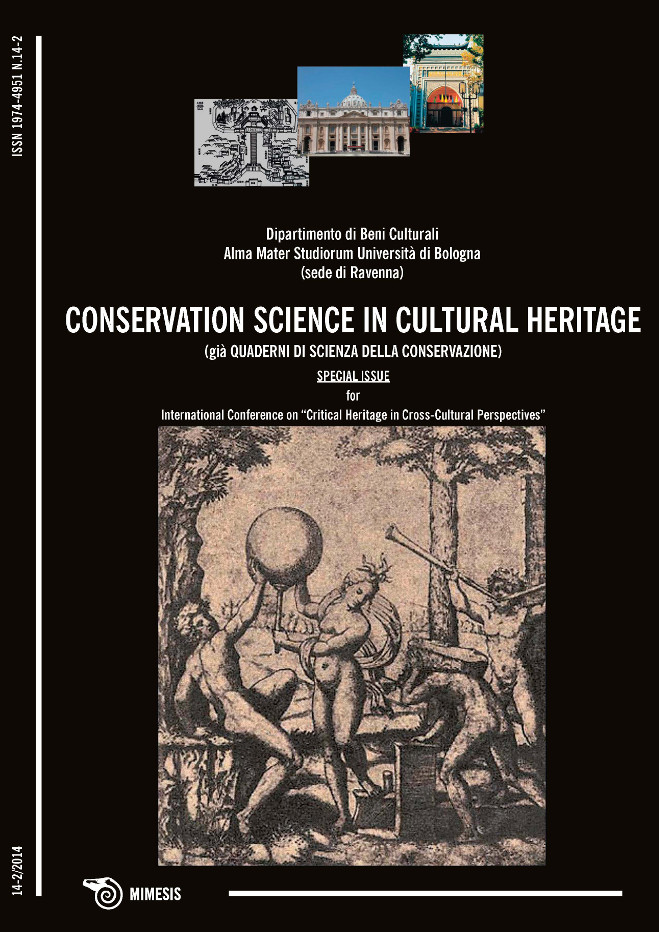On The Folk Customs of Huazhao Festival Which Is a Kind Of Intangible Cultural Heritage and its Modern Value
DOI:
https://doi.org/10.6092/issn.1973-9494/5450Keywords:
Huazhao Festival, folk customs, modern valueAbstract
Huazhao Festival is a traditional one that is celebrated in early spring and appeals to both highbrows and lowbrows. Once, it was as significant as Lantern Festival and Mid-autumn Festival. Ever since Tang Dynasty, it has undergone stages of emerging, thriving, declining and restoring. Originally, people only had a spring outing enjoying beautiful flowers at this festival; later, various other folk activities were also carried out on this day, including catching butterflies, picking wild vegetables, offering sacrifices to gods, predicting bumper and poor harvest, fastening strips of red cloth to stems of flowers and trees (shang hong), having competitions on grass, encouraging agriculture, holding and attending banquets, writing articles, paying court and so on. These activities demonstrated such characteristics of the national culture of China as elegance, harmony and life-friendliness. Obviously different from other traditional festivals like Spring Festival, Mid-autumn Festival, Dragon Boat Festival, etc, Huazhao Festival has unique style and value. Despite its fading away from people’s life due to changes in modern society, its cultural glamour and comprehensive value still exist. Along with economic and social development and the increase of people’s spiritual and cultural demands, Huazhao Festival has regained people’s attention. It has been restored and hosted in some regions and identified as an intangible cultural heritage. By means of literature review, the folk customs of Huazhao Festival was re-presented to some extent in this paper. Its modern values in areas including health, culture, ecology and industry were analyzed. This paper is of certain significance, in respect of conserving and inheriting this national festival, promoting its restoration in more regions in a way more approximate to historical tradition and giving play to its unique role to benefit modern society.References
Renhe Xian Zhi (the annuals of Renhe County)(compiled in the reign of Emperor Kangxi) Volume 5 “customs”: “People in Tang Dynasty celebrated Huazhao Festival on the 15th day of the second lunar month.” This book was the block-printed edition printed in the 26th year of Kangxi Period (1687). A book that was the block-printed edition printed in the Hall of Wu Ying Dian in the 49th year of Kangxi Period (1710), Yuan Jian Lei Han · Sui Shi Bu Qi · Huazhao quoted from Ti Yao Lu: “Huazhao Festival was celebrated on the 15th day of the second lunar month in Tang Dynasty.”
Luo Qiu (Tang Dynasty): Hua Jiu Ci, included in volume I set 4 of Xiang Yan Cong Shu,a book compiled by Chong Tianzi. Beijing: People’s Literature Publishing House, 1992, p. 963.
Huazhao Festival celebrated in the recent ten years was very popular but lacked folkcustoms, an article on Chutian Metropolis Daily issued on March 8th, 2012.
People in Love worshiped for a happy marriage in rain on Huazhao Festival, an article on Southern Metropolis Daily issued on March 19th 2011.
Chen Bangzhan (Ming Dynasty), He Hua Shan Fang Shi Gao (a collection of poems) volume22. The block-printed edition printed by Niu Weichi in the 46th year of Wanli era in Ming Dynasty.
Kuaiji Xian Zhi (the annuals of Kuaiji County) (written in Kangxi period) volune 7 “recordsof customs”. The stereotype edition proofread by the History Recording committee of ShaoxingCounty, which was printed in the 25th year of The Republic of China.
Fang Hui (in Yuan Dynasty): Tong Jiang Xu Ji, volune 6. Included in Si Ku Quan Shu that was compiled in Wen Yuan Ge (the imperial library of Qing Dynasty).
Downloads
Published
How to Cite
Issue
Section
License
Copyright (c) 2014 Zhihui Ma
Copyrights and publishing rights of all the texts on this journal belong to the respective authors without restrictions. Authors grant the journal right of first publication.
This journal is licensed under a Creative Commons Attribution 4.0 International License (full legal code).
See also our Open Access Policy.






